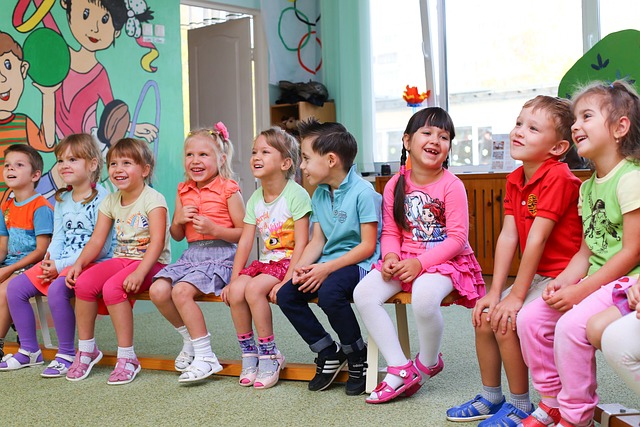Have you ever pondered about pursuing education in Japan as an expatriate? The Japanese education system can seem perplexing when you’re relocating here. This is a common concern among expatriates considering a move to Japan. This guide will clarify Japan’s education system, allowing you to see how it can be a fit for you and your family as we traverse the route to academic accomplishment in Japan.
Education in Japan: A Brief Overview
6-3-3-4 Structure
Japan’s education adheres to a precise 6-3-3-4 system, where the 6-3 part is mandatory for children below 15.
- Elementary School (6 Years): Starting at six, children undergo six years of elementary education where the learning goes beyond academics to include life skills, health education, and arts. Students help in serving school lunches and partake in “cleaning time,” instilling a sense of responsibility and community. Public elementary schools are tuition-free.
- Junior High School (3 Years): After elementary, students progress to junior high, studying a broader curriculum. Public junior high schools are tuition-free.
- High School (3 Years): Students then choose either academic or vocational high schools. Japan boasts a high school enrollment rate of 98.9% (2021).
- Higher Education (4 Years): After high school, the options are diverse, ranging from universities to technical schools. Alternative to standar high school for technical enthusiasts is “高専” (Kosen), which is exclusive 4-year institutions known for excellence in robotics and tech fields, with nearly 100% employment rate post-graduation.
This structured education system lays a robust foundation for lifelong learning and offers flexibility in choosing career paths.
Academic Year and School Schedule
The academic year in Japan starts in April and ends in March of the following year, divided into three terms: April to July, September to December, and January to March. This unique schedule can pose challenges for international students due to differences in academic calendars. However, many utilize this transition period to prepare for international moves, engage in internships, or broaden their educational horizons.
Examination System and Cram Schools
The Japanese examination system is rigorous, playing a pivotal role in shaping a student’s educational trajectory. To excel, many students attend cram schools, or “juku,” which offer additional coaching and preparation for entrance exams, emphasizing the dedication to academic success in Japanese culture.

I really enjoyed going to my Juku. The structured learning notably boosted my scores and allowed me to meet students from different schools, offering me a valuable chance to be part of another community.
Modern School Regulations
Some Japanese schools are strict about rules related to students’ appearance, like hair and clothing. Efforts are being made to relax overly restrictive school rules, emphasizing respecting students’ individuality. Discussions continue around regulations, especially regarding students’ appearances, and alternatives are being sought to create a more flexible environment for students.

Why are some schools strict about appearance?
Back in the 1960s and 1970s, when there was a lot of campus unrest, the Japanese government decided to bring in strict disciplinary education to keep things under control.


Are strict rules still prevalent?
In the 1960s and 70s, with campus unrest brewing, the Japanese government went strict to control schools. By the 1980s, as violence flared, they realized some rules were overboard. Today, efforts are ongoing to revise inappropriate rules, but a few schools, especially private ones, still uphold strict regulations.


So, are there more flexible alternatives?
Yes. Schools with higher academic standards and international schools tend to have more relaxed rules. Additionally, a list of school rules across Japan is available online. Visit: 全国校則一覧 (National School Rules List).

Common Challenges For Expat Families
Language Barriars and Support
Entering the Japanese education system introduces unique challenges, especially for expatriate students and their families, primarily due to language barriers. Many may struggle with Japanese, impacting their lesson comprehension and peer interaction, while parents might find school communications confusing.
To counter these challenges, varied support systems and resources are available, although they may differ by municipality. As of 2006, over 70,000 foreign students were in public schools nationwide, with approximately 22,000 needing Japanese language instruction, a rising trend. International schools often offer bilingual programs and support to bridge language gaps, and numerous organizations and online communities provide guidance and resources for expatriate families navigating the Japanese education system. For the readers interested in the international schools options in Japan, you can find more insight in our detailed article “Choosing the Right International Schools in Tokyo“.
Online Support Information:
- Guidebook for Starting School (Created by Hyogo Prefecture Board of Education): This guidebook provides information in 16 languages about the Japanese school system, enrollment procedures, educational content, promotion/advancement, educational expenses, school regulations, scholarship systems, tuition waiver programs, employment, and main consultation destinations within the prefecture.
- Marmar Website: This English website, created by the MarMar group in Kamakura City, Kanagawa Prefecture, compiles necessary information from childbirth to adulthood, categorized by age. Additionally, MarMar organizes offline meetups.
English Proficiency Development
One significant challenge faced by expat students and their families in the Japanese education system relates to English proficiency. Historically, Japanese English education has heavily focused on grammar, reading, and writing, somewhat akin to studying Latin to learn English. As a result, many graduates possess strong grammar skills but struggle with conversational English proficiency.
To address the English proficiency challenge, Japan is actively addressing the challenge of English proficiency by conducting middle and high school English classes predominantly in English and modifying university entrance exams to assess all four language skills: reading, listening, writing, and speaking. However, the result of this ongoing shift is unknown yet.
Conclusion
Navigating the Japanese education system can pose unique challenges for expat students and their families, primarily due to language barriers and differing educational structures. However, numerous resources and support systems are available to assist in overcoming these challenges, ensuring a smooth educational journey in Japan.


